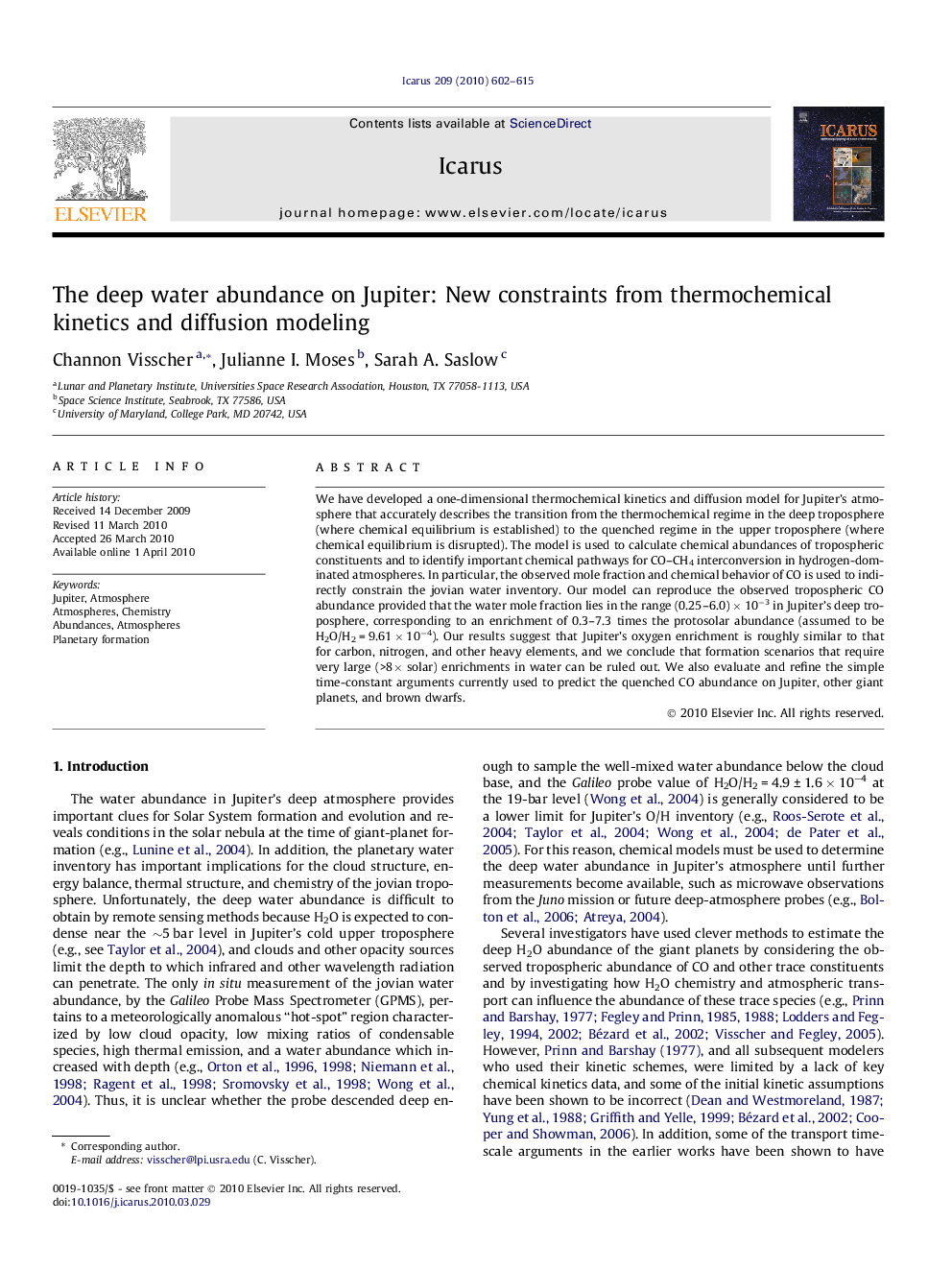| Article ID | Journal | Published Year | Pages | File Type |
|---|---|---|---|---|
| 1774029 | Icarus | 2010 | 14 Pages |
We have developed a one-dimensional thermochemical kinetics and diffusion model for Jupiter’s atmosphere that accurately describes the transition from the thermochemical regime in the deep troposphere (where chemical equilibrium is established) to the quenched regime in the upper troposphere (where chemical equilibrium is disrupted). The model is used to calculate chemical abundances of tropospheric constituents and to identify important chemical pathways for CO–CH4 interconversion in hydrogen-dominated atmospheres. In particular, the observed mole fraction and chemical behavior of CO is used to indirectly constrain the jovian water inventory. Our model can reproduce the observed tropospheric CO abundance provided that the water mole fraction lies in the range (0.25–6.0) × 10−3 in Jupiter’s deep troposphere, corresponding to an enrichment of 0.3–7.3 times the protosolar abundance (assumed to be H2O/H2 = 9.61 × 10−4). Our results suggest that Jupiter’s oxygen enrichment is roughly similar to that for carbon, nitrogen, and other heavy elements, and we conclude that formation scenarios that require very large (>8× solar) enrichments in water can be ruled out. We also evaluate and refine the simple time-constant arguments currently used to predict the quenched CO abundance on Jupiter, other giant planets, and brown dwarfs.
